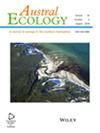Decision Analysis for Sustained Control vs. Eradication of Invasive Pines: A Case Study in the Southern Pampas of Argentina
Abstract
Biological invasions are one of the main drivers of change in terrestrial ecosystems and also a major expenditure in the budget of conservation units. Management of invasive species involves sets of options, including the alternatives of sustained control aimed at containing the spread of the invader or reducing its density or occupation area vs. the complete eradication of the species from a given site. Grasslands are particularly affected by the expansion of alien trees and shrubs that provoke not just a change in species composition but also a shift in the structure and functioning of the whole ecosystem. In this paper we compare the alternatives of sustained control (containment) vs. eradication and vs. no intervention for a stand of invasive alien pines growing in a grassland nature reserve in the southern Argentinean Pampas. We built a decision analysis schema considering both the effects of the pines on native plant communities and the costs of mechanical control. We compared total vegetation cover, plant species richness, and composition in plots located in areas with different densities of pine trees and in controls free of the invasion. The costs of controlling pines were calculated from actual management interventions in sites with different tree densities. Areas with high density of pines were associated to an impoverishment in vegetation richness and diversity with respect to those at medium and low tree density. Pines were associated with changes in the floristic composition of the piedmont grasslands, including an increase in the abundance of exotic grasses. Cost analysis revealed that sustained control equates to the investment of eradication in thirty years. If we add to the analysis the capacity of P. halepensis to carry out long-distance dispersal events that can result in new invasion nuclei, eradication appears as the most efficient management alternative both in environmental and budgetary terms.

 求助内容:
求助内容: 应助结果提醒方式:
应助结果提醒方式:


